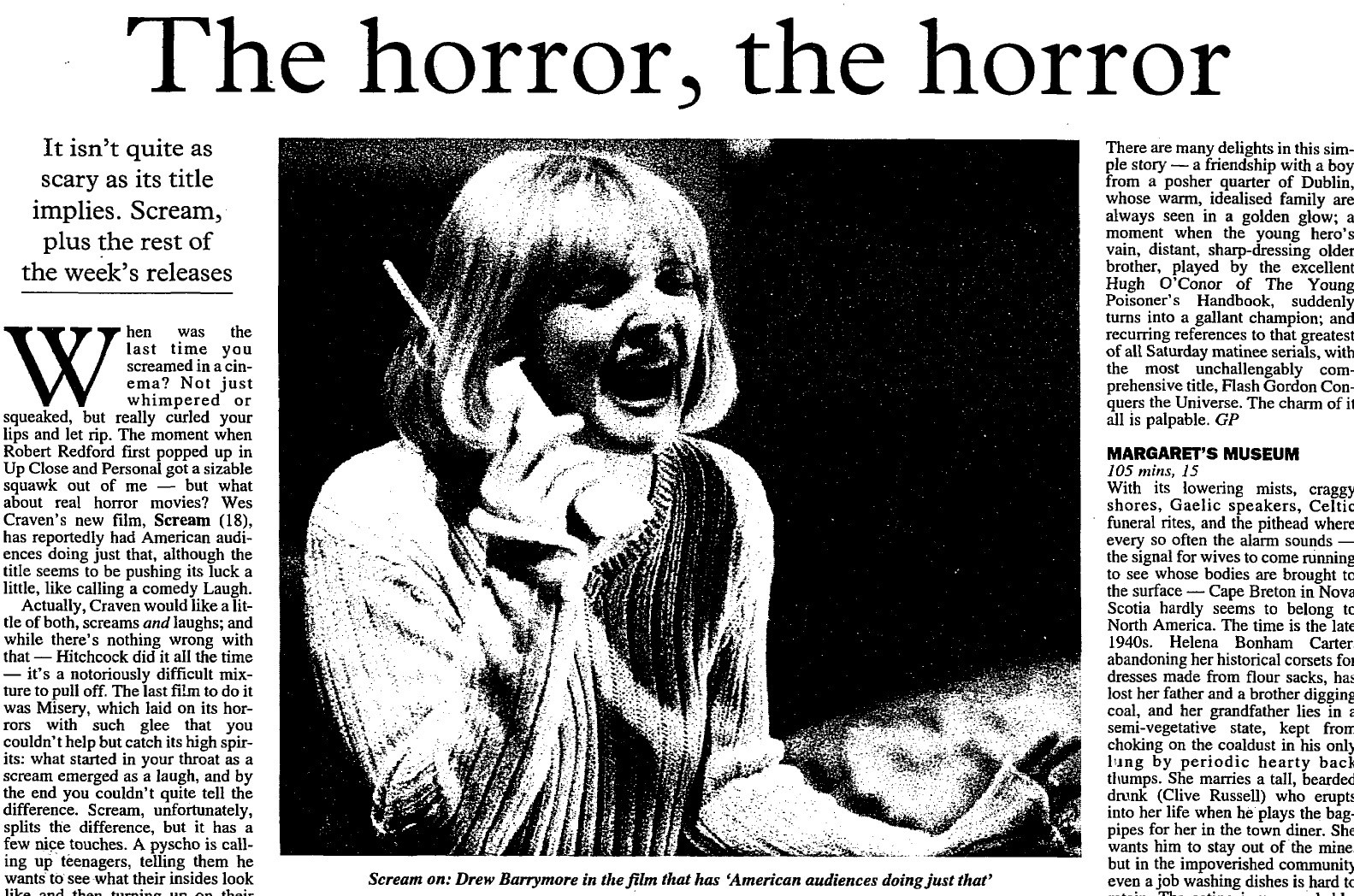|By India Marriott, Gale Ambassador at the University of Nottingham|
From the dawn of time, humans have been sharing stories of horror. From fairy tales of children lost in the woods to supernatural tales of ghosts and ghouls, tales of horror are interwoven throughout human history. However, in terms of Western culture, tales of horror began to appear throughout the eighteenth century in the form of the Gothic novel, after which several shifts in culture have taken place which impacted the Horror genre, from Romantic ideals, featuring an intensity of human emotion, to Victorian strict morality and rationality, right through to modern slasher films and the numerous subgenres that currently exist within the Horror genre.
Emergence of the Horror story
As previously mentioned, the idea of the ‘horror story’ has existed as far back as oral traditions of storytelling can be traced, so it’s difficult to pinpoint a specific beginning to the genre, however some may put forward the classic book of fairy tales that have been told to children for hundreds of years – Grimms’ Fairy Tales (1812). This collection of stories was one of the first officially published versions of fairy tales that had already been told to children for many years, with popular stories such as Hansel and Gretel being part of the collection. Though not technically part of the Horror genre, many of the stories are in fact truly horrific at their core, and contain many of the eerie elements that we recognise today as Horror characteristics.
One of the darkest tales is that of The Robber Bridegroom, which follows the story of a daughter of a miller who is betrothed to a suitor who she dislikes greatly, with her eventually learning the murderous truth about her future husband when forced to visit him in his troubling woodland house. The picture below, from an article in The Times Digital Archive, features the perfect example of the dark underbelly of many of these tales, with the angelic-looking characters held up by four more villainous people.
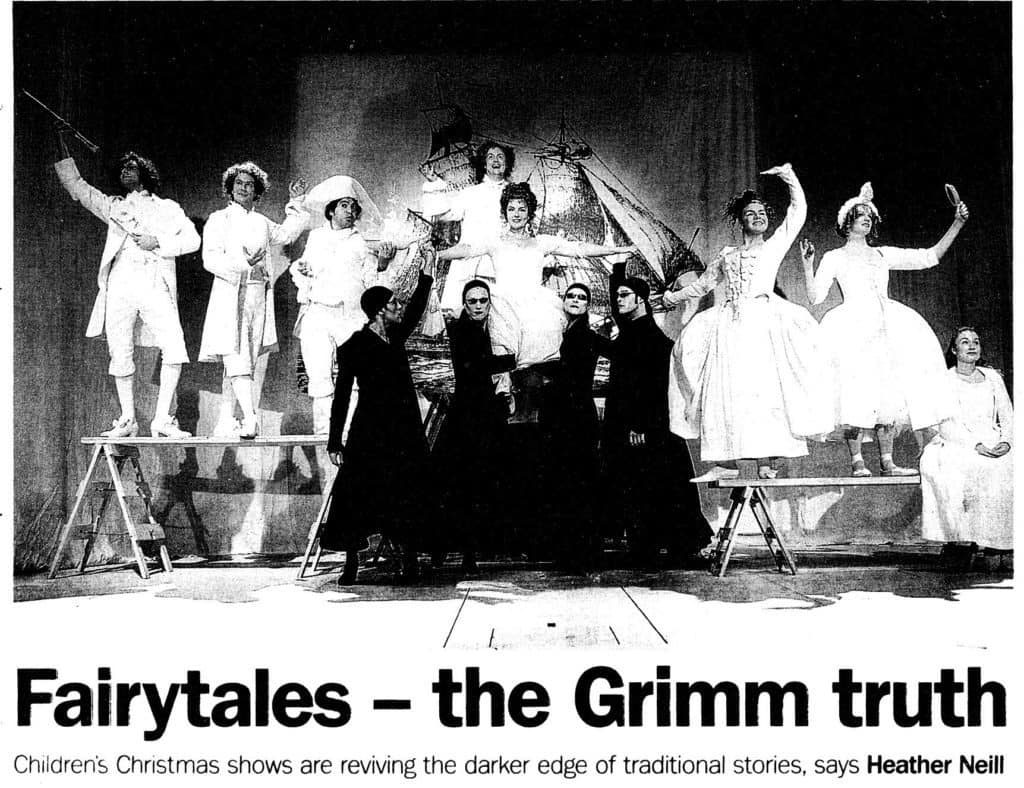
Foundation of the Gothic genre
Henry Walpole is named as the founder of the Gothic genre with the publication of his 1764 novel The Castle of Otranto. Presented as the English translation of a recently discovered manuscript, the story follows the life of the prince of Otranto, Manfred, as he marries his son’s intended wife after his son’s unusual death, and the supernatural events that follow.
The ‘found document’ framing device became an incredibly powerful trope within the Gothic and Horror genres and is one that has evolved from its initial use in the eighteenth century to modern day. This device is incredibly compelling in terms of the Horror genre as it allows for the author to represent the events of the novel as fact as opposed to fiction, automatically confirming any fears the reader may have had and encouraging the sensationalism that sparked the widespread enjoyment of the ‘frantic novels’ being released in the eighteenth century. In the below piece from the Sunday Times Historical Archive, Kathleen Lee discusses examples of these frantic novels such as The Castle of Otranto, which play on many classic Gothic horror tropes such as Gothic architecture and the supernatural.
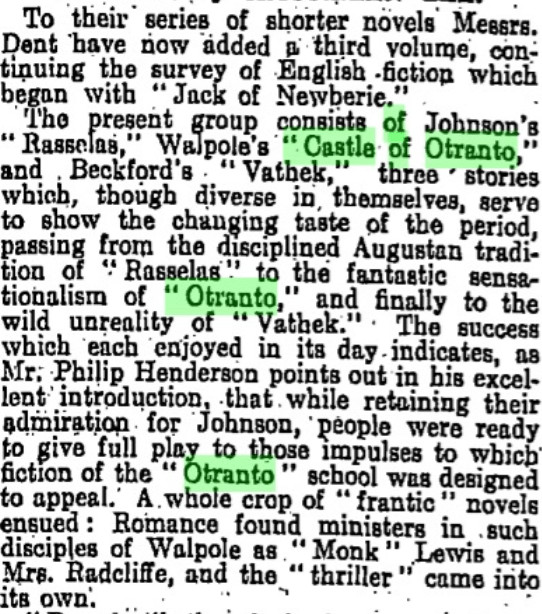
Gothic literature in the Enlightenment
As the Enlightenment period flourished, so did the Gothic genre, with the wealth of scientific developments allowing for a constant societal state of bewilderment, and in turn fear. Exploring ideas of morality, humanity, science and ideas of the sublime, the Gothic genre allowed for exploration into many of the focal ideals of the Enlightenment period. Many look to Mary Wollstonecraft’s debut novel Frankenstein (1818) as the perfect example of this. Focusing on the horror of scientific transgression and exploring immensely sublime landscapes as the story follows the journey of the Monster, the novel encapsulates many of the themes of the Enlightenment period and is widely considered both a horror novel and one of the first science-fiction novels. Science, and the horrors of transgression, has in turn become a prolific theme throughout the Horror genre as a whole.
The effect of Victorian values on the Gothic genre
The genre persisted through into the nineteenth century and the Victorian era, and regularly played on the Victorian’s intense focus on morality and the juxtaposition of scientific development versus the intensity of human emotions and the human experience. This in turn saw the emergence of many iconic Gothic novels such as Bram Stoker’s Dracula (1897) and Robert Louis Stevenson’s The Strange Case of Doctor Jekyll and Mr. Hyde (1886).
Once again, Dracula uses an off shoot of Walpole’s ‘found document’ narrative form, transitioning to the epistolary style in order to recount the tale through a combination of letters, diary entries and newspaper articles. As previously stated, this narrative style allows for the perfect basis on which to build suspense and terror, through relaying the events of the novel as fact rather than fiction and confirming the validity of the reader’s fears when reading.
Horror in early cinema
As the Horror genre moved into the modern era, the emergence of horror films came to the forefront of cinema with the release of film adaptations of many of these incredibly famous horror novels. Universal released film versions of both Dracula and Frankenstein in 1931, igniting a genre in itself of film adaptations based on classic horror novels and sparking a new generation’s love for the horror stories of the past. Within the source below from The Illustrated London News Historical Archive, you can see images from some of the most iconic films from this time period in cinema, such as Dracula, Dr Jekyll and Mr Hyde and the Hunchback of Notre Dame, exhibiting the manner in which many of the protagonists were reintroduced into popular culture.
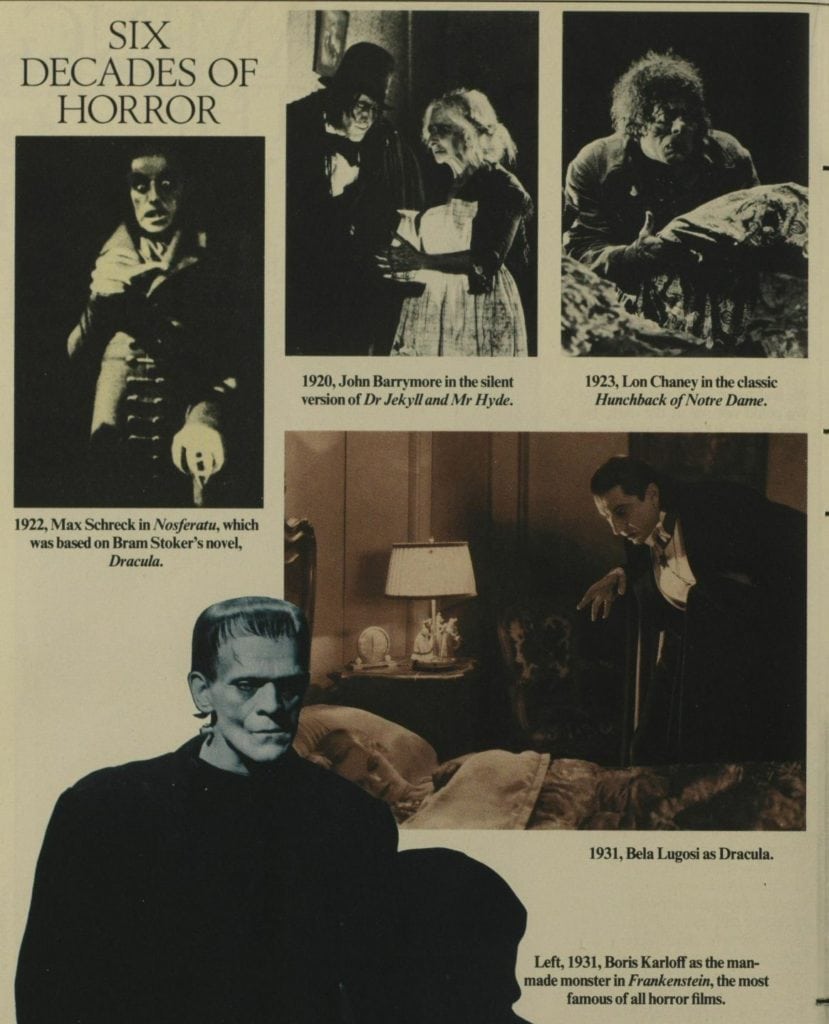
Iconic Horror films
Moving into more recent horror, the 1970s saw the release of some of horror’s most iconic symbols. Stephen King’s The Shining (1977) and Carrie (1974) were released, whilst ‘slasher’ films grew in popularity with the release of movies such as The Texas Chainsaw Massacre (1974) and Halloween (1978). This popularity ran through into the 1980s, with many critics agreeing with the view of James Rampton in The Independent Historical Archive that ‘the Eighties saw a deluge of low-budget films about knife-wielding maniacs slaughtering spoilt high-school kids, from Friday the 13th[1980] to A Nightmare on Elm Street [1984]’. The slasher genre has carried through to today, with recent releases including the highly rated X (2022) bringing the slasher subgenre back into mainstream horror.
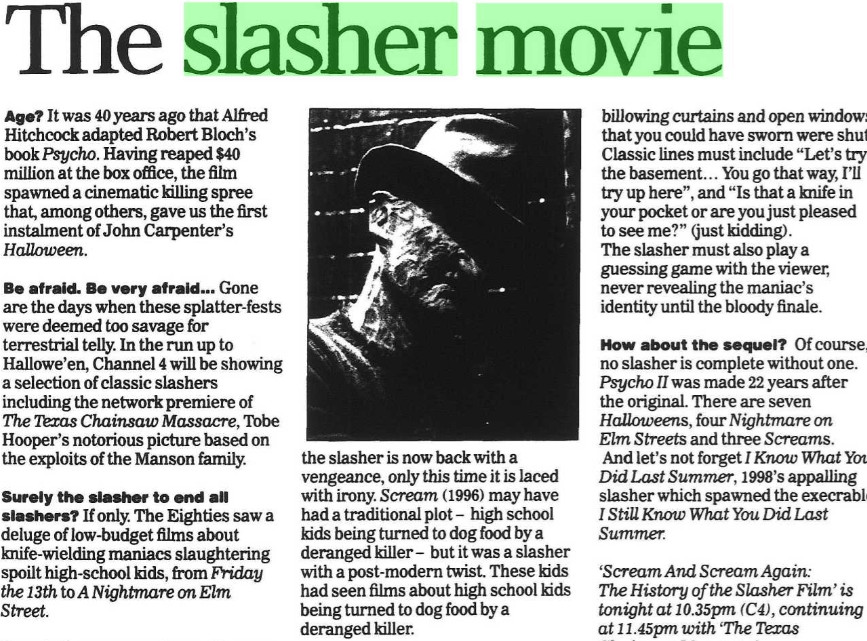
A multitude of subgenres within Horror
Furthermore, recent cinema has seen the emergence of thousands of different styles of horror, and the release of movies such as Hereditary (2018) and Midsommar (2019) has seen a new wave of horror fans. This variety, both on the page and the screen, has resulted in countless distinct subgenres, and resulted in infinite debates as to which stories qualify as what. These subgenres can be ‘monster specific’, with categories including zombies, vampires, and witchcraft, or more general to include the overall horror represented, such as paranormal or psychological.
Interestingly, the popular genre of the eighteenth and nineteenth century that explored presenting a fictional text as fact, such as the way in which The Castle of Otronto (1764) is written in the form of a found manuscript, has evolved in the modern era into the ‘found footage’ genre, with the likes of The Blair Witch Project (1999) gripping the nation with its amateur filming style.
Exploring the darkest parts of human existence
So, whether you enjoy classic Gothic literature, or a gory slasher film, the Horror genre has a myriad of topics for you to explore and enjoy. Originating from the oral tradition of mythology and folklore, and running throughout history as an ever-evolving genre that eagerly blurs the line between fact and fiction to entice watchers and readers to step away from comfort and journey into a world of fear and excitement, the Horror genre explores the darkest parts of human existence.
If you enjoyed reading about the evolution of the Horror genre and other aspects of popular culture, check out:
- Tracking the Evolution and Reception of Monstrosity in Literature
- Horror and Censorship: Alfred Hitchcock’s ‘Art of the Cinema’
- The Phantom of Popularity
- Investigating the Evolution of Twenty-First Century Pop Culture Using Digital Humanities Techniques
- The Murder of Empress Myeongseong of Korea
- A Genteel Murderess’ – Christiana Edmunds and the Chocolate Box Poisoning
- ‘The compartment was much bespattered with blood’: the Brighton Railway Murder
- Are We Obsessed with Serial Killers?
Blog post cover image citation: Shone, Tom, and George Perry. “The horror, the horror.” Culture. Sunday Times, 4 May 1997, p. 7[S9]. The Sunday Times Historical Archive, https://link.gale.com/apps/doc/FP1803311250/GDCS?u=univnott&sid=bookmark-GDCS&xid=a51ec2e0&xty=open

